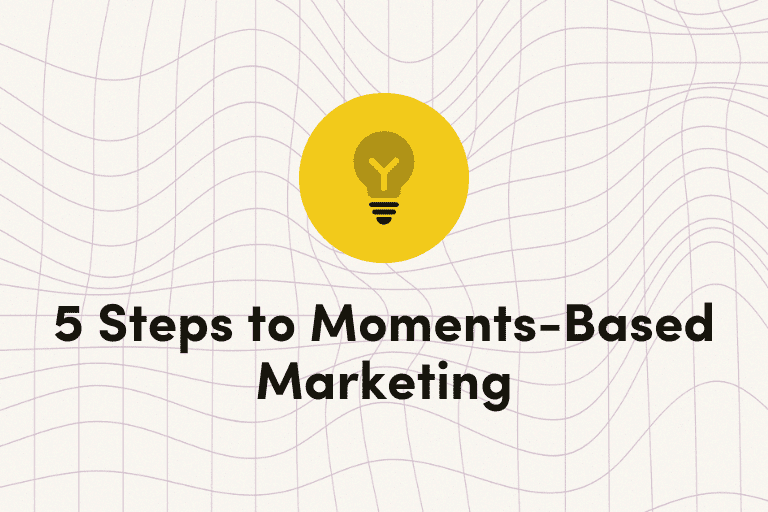Market Segmentation: What Is It?
Market segmentation refers to the practice of dividing your company’s audience of prospects and customers into segments based on specific attributes.
As you market to your customers, market segmentation helps you develop personalized marketing approaches for each type of segment, based on their behaviors and goals. To ensure you are reaching them with personalized content that will be relevant to their unique needs,
you can group similar types of customers together based on demographic information, their past behavior, their interests, and other attributes.
By sorting customers according to segment, you get a strong understanding of what messaging customers are most likely to respond to, helping you tailor your marketing efforts and budget based on those data points. For instance, if you have a set of customers who only respond to SMS offers but ignore email marketing, you can eliminate them from your email drip campaigns, helping you consolidate your marketing efforts.
It also means that you can get a better understanding of your ROI across each segment, and predict future revenue. By segmenting your customers based on channel performance, for instance, you’ll understand which channels are most successful for reaching each audience segment and can adjust your marketing approach accordingly. By using predictive audience segmentation to understand your audience’s likely future actions based on your aggregated customer data, you’ll be able to better understand which customers are likely to make purchases and which are likely to churn.
Types of Market Segmentation
There are numerous ways to segment your customers into groups. Here are a few options to consider:
Demographic Segmentation
Demographic segmentation focuses on basic information about your customers. This might include their age, income, family size, gender, education, or occupation. Many customers willingly provide much of this data when registering a profile. Some data may be gained from third-party sources, but you’ll be able to gain more accurate data for segmentation when you’re able to capture it directly. Demographic segmentation can be used to differentiate the types of products you might offer (i.e. sending promotions for men’s versus women’s clothing), or to send promotions based on specific events such as the customer’s birthday.
Behavioral Segmentation
This type of segmentation is typically based on a customer’s digital footprint. What interactions have they had with your brand, both online and in-store? You can use this to determine their engagement level and brand loyalty, their product affinities, and their purchasing preferences (i.e., many small purchases on a regular basis, or one large occasional purchase). This type of segmentation can use real-time event data to trigger a marketing campaign. For instance, if a customer has recently browsed a product page, you can follow up with a campaign based on that specific product.
Psychographic Segmentation
This type of segmentation is focused on your customers’ lifestyle, values, and other “inner” qualities, which can be determined through user surveys as well as through gaining data about the other brands and interests they follow. This can be helpful in determining the types of marketing messages to focus on with each type of customer. For example, a customer segment with a strong interest in organic products will appreciate receiving content that focuses on your brand’s approach to sustainable style.
Geographic Segmentation
You can segment your customers according to geographic criteria including country, region, city, or zip code. This data can be used to customize the language and the time of day you send your marketing campaigns, as well as for more specific purposes. If your brand is opening a new location in Jacksonville, Florida, you might send a promotion to customers who live within 30 miles of the new store. Or, you can segment based on climate. If customers in one region are expecting a snowstorm, you can send them a promotion focusing on stocking up on emergency supplies before the storm hits.
Combining Market Segments for a Personalized Marketing Effort
To generate the best results from your marketing efforts, it’s important to do more than just break your audience up into segments. You should combine multiple segments to generate dynamic content that’s custom-built for individual audience members, ensuring that your efforts will be tailor-made to fit their unique needs and preferences.
Let’s say one of the customers for your kids’ clothing brand is a woman from Chicago who has three children and has filled out all of their ages and sizes on a user profile. Because Chicago is in a region where an early winter storm is predicted, you can use both geographic and demographic segmentation to send her a marketing campaign that recommends a personalized shopping list of winter gear in all of her kids’ sizes and favorite styles, including messaging about preparing for the storm. Then, if she clicks on one of the product pages in your email but doesn’t make a purchase, you can use behavioral targeting to follow up across multiple marketing channels including SMS, in-app notifications, and direct mail, offering a promotional discount for her next purchase.
Summary
Using a cross-channel marketing platform like Iterable makes it easy to integrate multiple market segments to personalize your marketing campaigns at scale to an audience of millions. You can use marketing automation to plan out sequenced messages across multiple channels to user segments based on any combination of attributes. Integrating data from your CRM, e-commerce platform, website and mobile app analytics, and other sources alongside demographic data can help you gain a 360-degree view of each customer.
By using market segmentation to generate highly specific customer segments, you can target customers based on criteria down to the individual products they’ve viewed or purchased, using the most engaging methods for reaching them based on their channel and messaging preferences. This approach helps you to optimize the customer experience for every customer, ensuring an engaging experience that will make it easier for customers to reach their goals.































